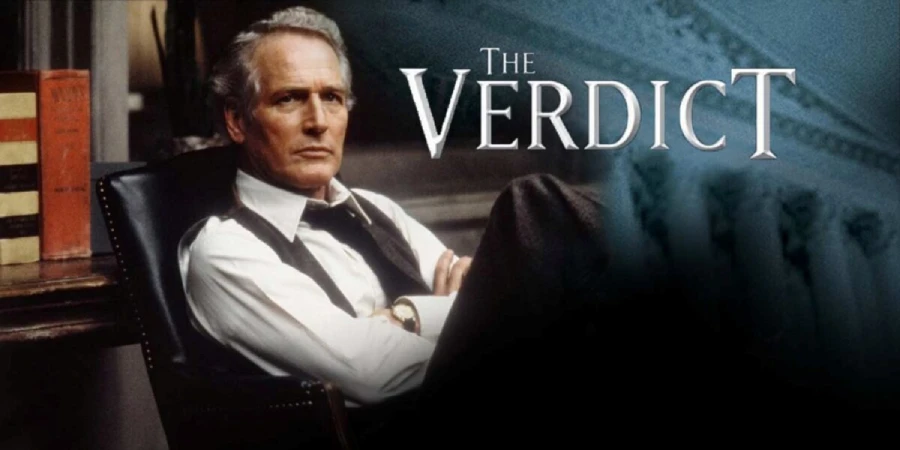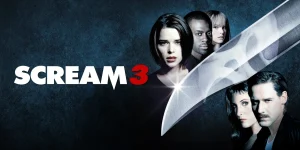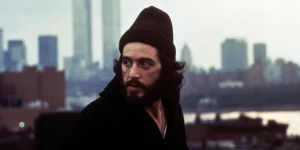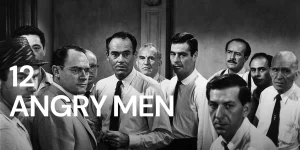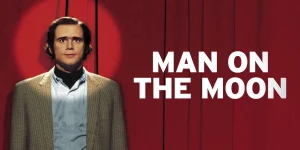Sidney Lumet’s The Verdict (1982) is a powerhouse courtroom drama that stands as one of the defining legal thrillers of the 20th century. With a screenplay by David Mamet and a towering performance by Paul Newman, it explores themes of redemption, integrity, and the fight against institutional corruption. It’s not just about law—it’s about morality, desperation, and one man’s attempt to reclaim his soul.
Table of Contents
ToggleDetailed Summary
Introduction: A Washed-Up Lawyer
Frank Galvin (Paul Newman) is a once-promising Boston lawyer who’s fallen into alcoholism and desperation. He now scrapes together clients from funeral homes and lives off the fumes of his former reputation. Galvin’s life changes when his friend and former law partner, Mickey Morrissey (Jack Warden), hands him a seemingly easy medical malpractice case. It involves a young woman left in a permanent vegetative state after a botched anesthetic procedure during childbirth. Her sister and brother-in-law want a quick settlement, and the Catholic hospital is willing to pay.
The Unexpected Turn
Galvin, however, decides to reject the settlement after visiting the woman in the hospital. Something about her condition and the injustice hits him deeply. Against all advice—including from the family—he pursues a full trial. This decision puts him against a powerful legal team led by the formidable Ed Concannon (James Mason), who represents the hospital and the archdiocese. What was supposed to be an easy case turns into a brutal uphill battle.
The Legal Battle Begins
Galvin begins the trial with few resources, a tarnished reputation, and barely a chance to win. The judge (Milo O’Shea), clearly biased in favor of the defense, repeatedly undermines Galvin’s efforts. Key medical records are missing. Witnesses are intimidated or discredited. At one point, Galvin’s star witness—a nurse who initially supported the malpractice claim—vanishes, likely paid off by the defense.
Amid the chaos, Galvin forms a fragile relationship with Laura (Charlotte Rampling), a mysterious woman he meets at a bar. However, as the trial progresses, he discovers she is actually working for the defense—spying on him and feeding information back to Concannon.
A Game-Changing Testimony
Just as Galvin is on the verge of losing, he uncovers a surprise witness: a nurse named Kaitlin Costello. She had been listed as unavailable but is located in New York. Galvin flies her in to testify. On the stand, she delivers a stunning revelation: she had been forced to change the patient’s medical record under duress from the doctors involved, effectively covering up their negligence.
Closing Arguments
Galvin, exhausted and emotionally wrecked, delivers a passionate and personal closing argument. He appeals not just to the law, but to the conscience of the jury. He tells them that they are the last line of justice for the victim and that the world they want to live in depends on their verdict. It’s not flashy. It’s not polished. But it’s real.
Movie Ending
The jury finds in favor of Galvin’s client—and not just with a basic ruling. They award substantial damages, far beyond what was initially sought. It’s a complete and resounding defeat for the powerful hospital and legal defense team.
After the trial, Laura calls Galvin at his office. He stares at the ringing phone but doesn’t pick it up. The message is clear: some betrayals can’t be forgiven. He pours himself a cup of coffee—not whiskey—and sits alone in silence. It’s a subtle yet powerful ending that signifies hope, accountability, and perhaps redemption.
Frank Galvin doesn’t become a hero in the traditional sense. But he’s no longer a disgrace either. He’s fought for something just and earned back his dignity.
Are There Post-Credits Scenes?
No. The Verdict does not have any post-credits scenes. Like most dramas of its time, it concludes definitively with the last scene, offering no epilogues or sequel setups. Once the credits roll, the story is emotionally and narratively complete.
Type of Movie
This is a courtroom drama and character-driven legal thriller. It’s steeped in realism, heavy on dialogue, and focuses more on moral dilemmas and personal battles than action or spectacle.
Cast
- Paul Newman as Frank Galvin
- Charlotte Rampling as Laura Fischer
- Jack Warden as Mickey Morrissey
- James Mason as Ed Concannon
- Milo O’Shea as Judge Hoyle
- Lindsay Crouse as Kaitlin Costello
- Roxanne Hart as Sally Doneghy
- Edward Binns as Bishop Brophy
Film Music and Composer
The music is minimal, with no traditional score dominating the film. The sparse use of music was a deliberate choice by Lumet, emphasizing the realism and the gravity of the legal proceedings. What music exists is subdued, adding to the sense of isolation and emotional tension throughout.
Filming Locations
- Boston, Massachusetts: The city serves as a gritty, wintry backdrop to the story, reinforcing the bleak emotional state of Galvin and the cold, impersonal world of institutional law.
- New York City: Some courtroom scenes and interiors were filmed here.
Boston’s snowy streets, dim courtrooms, and shadowy bars are integral to the mood of the film. They reinforce the protagonist’s moral and physical decay—and his eventual attempt at rising from it.
Awards and Nominations
- Academy Award Nominations (5 total):
- Best Picture
- Best Actor (Paul Newman)
- Best Supporting Actor (James Mason)
- Best Director (Sidney Lumet)
- Best Adapted Screenplay (David Mamet)
Though it didn’t win any Oscars, the film was critically acclaimed and has grown in stature over time, particularly for Newman’s performance.
Behind the Scenes Insights
- David Mamet’s screenplay was rewritten by others, but Lumet later restored Mamet’s original draft for filming.
- Paul Newman considered this role one of his finest and lobbied for it, even though the character was deeply flawed.
- The role of Laura was almost given to Jane Fonda, but she turned it down.
- Lumet’s insistence on realism led to shooting in actual courtrooms and using natural light where possible.
- The film was shot in sequence to allow Newman to build his performance gradually.
Inspirations and References
- Based on the novel The Verdict by Barry Reed, a real-life trial lawyer.
- The story is fictional but based on composite real-life malpractice cases.
- The character of Frank Galvin draws inspiration from numerous real attorneys struggling with alcoholism or personal demons.
- Themes of moral decay, redemption, and institutional cover-up echo other Lumet films like Serpico and 12 Angry Men.
Alternate Endings and Deleted Scenes
There are no known alternate endings or major deleted scenes. The film’s final cut was close to the original script and was praised for its tight, focused narrative.
Book Adaptations and Differences
The movie closely follows Barry Reed’s novel, but with some adjustments for pacing and tone. In the novel:
- Laura’s betrayal is more drawn out.
- Some legal technicalities are more detailed.
- The character of the judge is portrayed with slightly more nuance.
The film simplifies certain legal elements to keep the emotional and narrative arcs clear and impactful.
Memorable Scenes and Quotes
Key Scenes
- Galvin taking Polaroids of the comatose patient.
- The surprise testimony of Kaitlin Costello.
- The brutal moment when Galvin discovers Laura’s betrayal.
- The final, understated scene in Galvin’s office with the phone ringing unanswered.
Iconic Quotes
- “There is no other case. This is the case. There is no other case.” – Frank Galvin
- “You guys are all the same. The doctors at the hospital. The lawyers. You’re all alike. You think you’re the law. You think you’re the truth.”
- “So much of the time we’re just lost. We say, ‘Please, God, tell us what is right. Tell us what is true.’ And there is no justice. The rich win, the poor are powerless.” – Galvin’s closing argument
Easter Eggs and Hidden Details
- The hospital’s name is St. Catherine Labouré, a nod to the Catholic saint associated with miracles—ironically used in a story about a religious institution’s corruption.
- Mamet’s signature terse dialogue is embedded throughout, especially in the courtroom exchanges.
Trivia
- Paul Newman was nominated for Best Actor six times before The Verdict. He didn’t win for this film but received an honorary Oscar in 1986.
- The courtroom used in the film was an actual, functioning Massachusetts courtroom.
- The film helped revitalize Newman’s career in the 1980s.
- James Mason had to adopt an American legal accent, but traces of his British roots remain.
- David Mamet later called The Verdict one of the best interpretations of his work.
Why Watch?
If you love courtroom dramas that emphasize character over spectacle, The Verdict is essential. It’s a masterclass in restrained storytelling, anchored by a once-in-a-lifetime performance from Paul Newman. Unlike many modern legal films, this one doesn’t rely on theatrics. It’s a slow-burn moral odyssey wrapped in legal procedure.
Director’s Other Movies
- 12 Angry Men (1957)
- Dog Day Afternoon (1975)
- Serpico (1973)
- Network (1976)
- Before the Devil Knows You’re Dead (2007)

